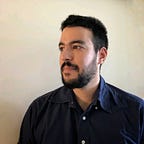We performed Dollar-Cost Averaging on 3 assets for 5 years. Here are the results!
It was in 2016 when I decided to make an experiment with a friend of mine. We decided to perform DCA on 3 assets that we thought would form the ideal portfolio. We invested $1K every quarter in stocks, gold and crypto. We wanted to be diversified in the US Stock Market, so we chose an index fund that tracks the S&P500. We also chose an ETF that buys gold, because it was inconvenient to buy actual gold bars or coins. Lastly, we bought ETH, because we loved how it was different from BTC, in terms of functionality.
Disclaimer: The following article presents an experiment and it is not financial advice of any kind.
What is DCA?
Before we begin, I want to explain what DCA is, so people can understand the experiment. DCA stands for (Dollar-Cost Averaging) and is an investment strategy, in which the investor contributes equal amounts of money in periodic purchases. Therefore, imagine contributing $1K every 6 months for 5 years. Or maybe, $5 every day for 2 years. Those are both examples of DCA.
S&P500, Gold, ETH quarterly price history:
Let’s see the price history of the assets we had chosen for our experiment.
If we were to look at the difference beween the final and the initial price, we would say that ETH is the best performer. The S&P500 is the second best performer and the last one is Gold.
The experiment
Asset allocation & DCA payments schedule:
We decided to keep a low-to-medium risk profile. Therefore, we allocated our postfolio as follows:
To achieve this allocation, we invested each quarter:
- $750 in S&P500
- $200 in Gold
- $50 in ETH
Therefore, we made a payment of $1K, every first of January, April, July and October from Jan 2017 until Jan 2022. In total, we made 21 payments!
S&P500 Results:
As I mentioned, we bought an ETF that tracks S&P500 index, but to make it easier for anyone to read, I will post the price of the index itself.
As you can see, we contributed $15,750 and the final value was $25,403. Thus, we made a profit of $9,653, or 61.29%.
Gold Results:
As I mentioned, we bought an ETF that tracks the value of gold, but I will post the price of gold per ounce.
We contributed $4,200 in total and the final value was $4,650. Thus, we made a profit of $451, or 10.75%.
ETH Results:
We bought ETH because we were very bullyish on the idea of bringing decentralisation in modern applications. We thought that despite Bitcoin is the largest cryptocurrency, Ethereum could be the way to decentralise the web. And as of today, we were true.
As you can see, we contributed $1,050 and the final value was $39,184. Thus, we made a profit of $38,134, or 3,630%.
Results in summary:
- We invested a total of $21,000.
- We made a total profit of approx. $45,000.
- We did the experiment for 5 years (or 21 quarters).
Conclusion, notes and thoughts:
- The gains would not be as high without cryptocurrency. However, crypto is very volatile and despite the fact that we would had been much richer if we invested more than $50 per quarter, we didn’t do it, because we mainly focused on keeping a low-risk mentality.
- The S&P500 was a magnificent performer.
- Gold was the worst performer, but it also had the lowest volatility among the 3 assets.
- The experiment was actually what we thought would be the optimal portfolio at the time. If we were to do it now, we would probably not invest in gold, at least not consistently, but only through buying jwellery or accessories.
- In fact, we never thought of this process as an experiment, but as a good investing opportunity.
Finally, I want to clarify, once again, that anyone should perform their own research before investing. The process can be difficult sometimes and nobody knows your risk tolerance better than yourself. Stay safe, stay well-invested!
